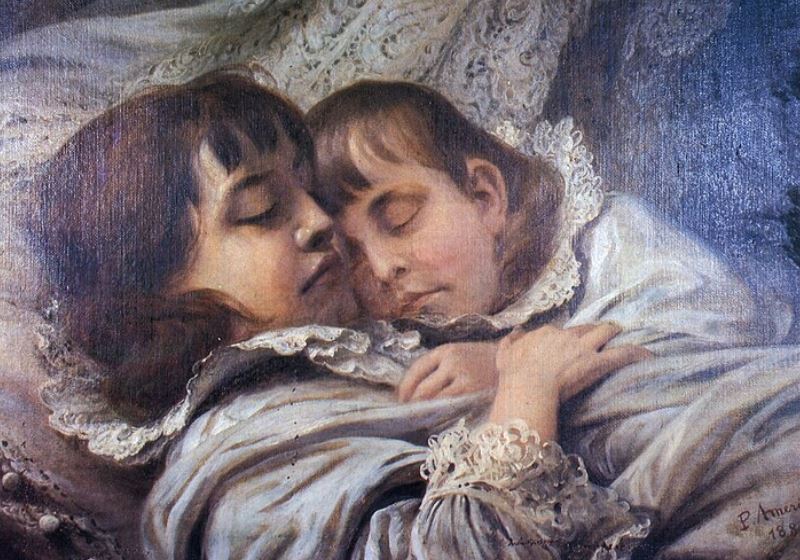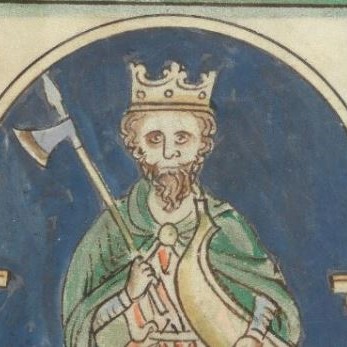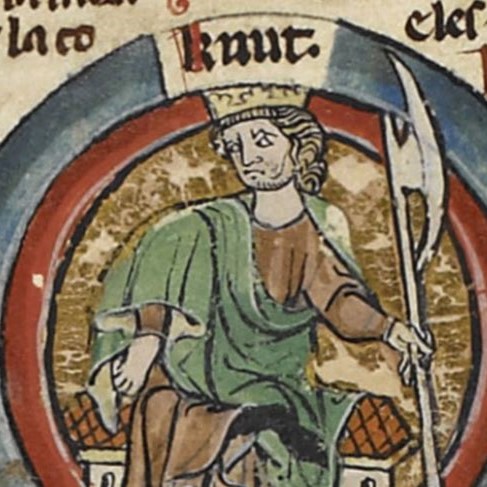The disappearance of Edward V and his younger brother Richard, Duke of York – collectively known as the “Princes in the Tower” – stands as one of the most enduring mysteries in British history.
This 15th-century royal drama has captivated historians, researchers, and the public for centuries, sparking debates, theories, and numerous investigations. The central question remains: Were the bodies of these young princes ever truly found?
1. The Mystery of the Princes in the Tower
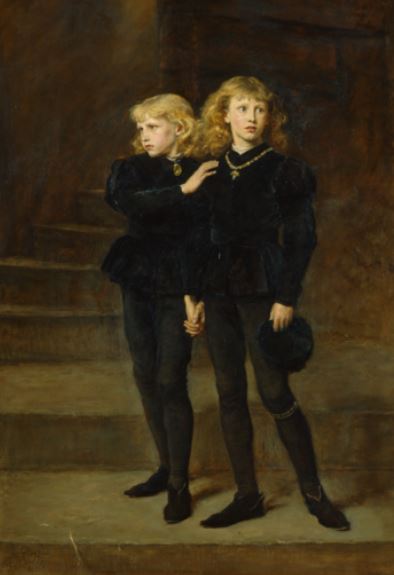
The story of the Princes in the Tower is deeply rooted in the period of English history known as the Wars of the Roses.
In 1483, following the death of their father, King Edward IV, the 12-year-old Edward V and his 9-year-old brother Richard were housed in the royal apartments of the Tower of London. This was to prepare them for Edward’s coronation. However, the boys mysteriously vanished shortly after, leading to centuries of speculation about their fate.
The disappearance of these young royals has long been a subject of intense scrutiny, not just for its historical significance, but also for its implications on the legitimacy of subsequent monarchs.
The question of whether their bodies were ever found is crucial to understanding this pivotal moment in English history and potentially resolving one of its greatest mysteries.
To fully understand the mystery of the Princes in the Tower, it’s crucial to explore the motivations behind Richard III’s decision to keep his young nephews in the Tower of London. This action, which preceded their disappearance, has been the subject of much historical debate and speculation.
2. Why Did Richard Keep the Princes in the Tower?
To fully understand the mystery of the Princes in the Tower, it’s crucial to explore the motivations behind Richard III’s decision to keep his young nephews in the Tower of London. This action, which preceded their disappearance, has been the subject of much historical debate and speculation.
The Tower as a Royal Residence
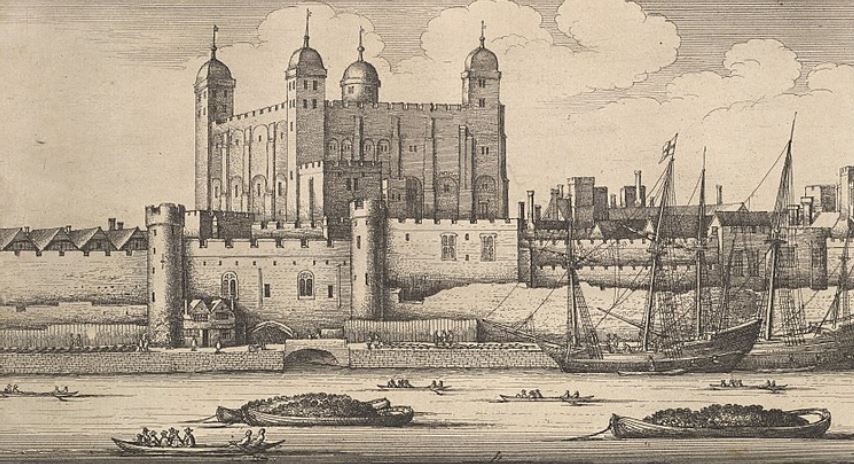
Contrary to its later reputation, the Tower of London in the 15th century was not solely a prison. It was a royal residence with a long history of housing monarchs and their families, especially before coronations.
When Edward V arrived in London in May 1483, his stay at the Tower was not, in itself, unusual or sinister. It was, in fact, a traditional part of the preparations for a new king’s coronation.
Richard’s Protectorship
Richard’s initial role was that of Lord Protector. He was appointed to govern until the young Edward V came of age.

However, the political situation in 1483 was highly volatile.
The Woodville family, relatives of Edward IV’s widow Elizabeth, were seen as a threat to Richard’s authority and to the stability of the realm.
By keeping the princes in the Tower, Richard could ensure their safety and prevent them from being used as figureheads for rebellion.
Questions of King Edward IV Legitimacy
In June 1483, Richard made a startling move. He declared that Edward IV’s marriage to Elizabeth Woodville had been invalid due to a pre-contract of marriage between Edward and another woman.
This declaration, enshrined in an act of parliament known as Titulus Regius, effectively rendered the princes illegitimate and ineligible for the throne.
With the princes now officially illegitimate, Richard’s continued custody of them served several purposes:
- It prevented them from being rallying points for opposition.
- It allowed Richard to ensure they were treated in a manner befitting their royal status, albeit not as heirs to the throne.
- It gave Richard control over their public appearances and communications, crucial in an era where royal imagery was a powerful political tool.
Security Concerns
The 1470s and early 1480s had seen several rebellions and political upheavals.
The War of the Roses was still fresh in memory, and the threat of renewed civil war was ever-present. By keeping the princes under his direct control, Richard likely hoped to prevent them from falling into the hands of his enemies, who might use them to challenge his rule.
Precedent and Expectations
Richard’s actions, while controversial, were not without precedent.
Throughout English history, there had been instances of royal minors being kept in protective custody during times of political instability.
Edward V’s own father, Edward IV, had briefly imprisoned Henry VI and his son during his reign.
Richard may have seen his actions as a necessary and expected step in securing his position and the stability of the realm.
The Question of Intentions
While these factors explain why Richard initially kept the princes in the Tower, they don’t resolve the mystery of what ultimately happened to the boys.
Richard’s critics argue that his actions were always intended to lead to the princes’ elimination, while his defenders suggest he was genuinely trying to navigate a complex political situation.
Some historians argue that he planned to keep the princes in comfortable confinement indefinitely, similar to how Henry VII later treated Edward Plantagenet, 17th Earl of Warwick.
Others believe that events spiraled out of Richard’s control, leading to decisions he hadn’t initially intended.
Whether his intentions were protective, pragmatic, or sinister remains a subject of intense historical debate. This ambiguity surrounding Richard’s motives adds another layer of complexity to the enduring mystery of the Princes in the Tower.
3. How Did the Princes in the Tower Die?
The tragic deaths of the princes in the Tower of London is shrouded in intrigue, speculation, and dark folklore.
The circumstances surrounding their disappearance are murky.
Historical records indicate that the boys were last seen in public in June 1483. Following their confinement in the Tower, they were never seen again.
Rumors and theories circulated, fueled by the turbulent political climate of the time.
One of the most enduring legends is that they were smothered in their sleep, a theory fueled by later historical narratives, including Sir Thomas More’s writings, which painted Richard as a tyrant. More’s account, though written years later, depicted Richard as a ruthless usurper who would stop at nothing to maintain his grip on power.
Various theories continued to emerge over the centuries, from claims that they escaped to live in obscurity to suggestions of involvement by rival factions, including the Tudors, who had their own reasons to want the princes out of the picture.
Ultimately, the fate of Edward V and Richard of York remains an unresolved enigma. Their disappearance not only marked the tragic end of their lives but also solidified the turbulent legacy of a period rife with ambition, betrayal, and the quest for power in the heart of England.
4. The 1674 Discovery
On July 17, 1674, nearly two centuries after the princes’ disappearance, a discovery at the Tower of London reignited interest in their fate.
During renovation work, laborers uncovered two skeletons while demolishing a staircase near the White Tower. This find quickly captured the attention of King Charles II and the public, as it seemed to align with the long-standing narrative of the princes’ murder.
The Discovery Site
The exact location of the discovery has been a subject of debate among historians.
While a plaque in the White Tower today suggests the bones were found under a staircase within the tower itself, most experts argue they were actually discovered outside the White Tower, likely to the south, near the entrance to the Chapel of St John.
John Knight, Chief Surgeon to Charles II, provided a contemporary account, stating the bones were found
“digging down the Stairs which led from the King’s Lodgings, to the chappel in the said Tower, about ten foot in the ground.”
This description aligns with the area south of the White Tower, which was used to access the Chapel of St John.
Charles II’s Response
Upon learning of the discovery, Charles II took swift action.
Recognizing the potential historical significance, he ordered Sir Christopher Wren, one of Britain’s most renowned architects, to design a marble urn to house the remains.
The urn was crafted by Joshua Marshall, the King’s Master Mason, further emphasizing the importance placed on this discovery.
In 1678, Charles II had the remains interred in Westminster Abbey, the traditional burial place of English monarchs. The urn bore a Latin inscription identifying the bones as those of Edward V and Richard, Duke of York, stating they were discovered “after 191 years in the rubbish of the stairs.”
Analysis of the Discovery’s Significance
Charles II’s decision to support the association of these bones with the Princes in the Tower was significant for several reasons:
- Political Symbolism: As a monarch who had restored the crown following the period of the English Civil War and the Commonwealth, Charles II likely saw this as an opportunity to demonstrate his connection to royal history and legitimacy.
- Historical Resonance: The story of the deposed Edward V may have held personal significance for Charles II, whose own father, Charles I, had been deposed and executed just 25 years earlier.
- Public Narrative: By officially recognizing these remains as those of the princes, Charles II was, in effect, endorsing a particular version of history – one that implicated Richard III in the princes’ murder.
However, it’s important to note that the identification of these remains was based on circumstantial evidence rather than scientific proof. The age estimation of the skeletons and the location of their discovery were the primary factors in their identification as the princes.
5. Modern Investigations and Theories
While the 1674 discovery was significant, it was far from conclusive.
As historical research methods advanced and new technologies emerged, the mystery of the Princes in the Tower continued to intrigue researchers, leading to further investigations and new theories.
The 1933 Medical Examination
In 1933, the remains interred at Westminster Abbey were subjected to a medical examination.
This study, conducted by Lawrence Tanner (archivist of Westminster Abbey) and Professor William Wright (a dental expert), provided some interesting insights:
- The bones were determined to belong to two children, with estimated ages aligning roughly with those of Edward V and Richard of York at the time of their disappearance.
- Evidence of osteomyelitis, a bone infection, was found on one skeleton, which some researchers have linked to Edward V’s known health issues.
However, this examination had significant limitations.
The technology of the time did not allow for more advanced analyses like DNA testing or radiocarbon dating. Moreover, the examination’s methodology has been criticized by modern experts, casting doubt on some of its conclusions.
Recent mtDNA Discoveries
A significant breakthrough came in recent years with the discovery of the mitochondrial DNA (mtDNA) sequence of the Princes in the Tower.
This research, spearheaded by Dr. John Ashdown-Hill MBE and academic Glen Moran, used techniques similar to those employed in identifying the remains of Richard III in 2012.
The team traced Elizabeth Roberts, an opera singer, as a direct all-female line descendant of the princes’ aunt, Margaret Woodville. As their first cousin 16 times removed, Roberts’ mtDNA provides a crucial reference point for potential identification of any remains thought to be those of the princes.
This discovery opens up new possibilities for conclusively identifying the Westminster Abbey remains or any other remains that might be found in the future. However, as of 2024, permission has not been granted to conduct DNA testing on the Westminster Abbey bones, leaving this avenue of investigation unexplored.
Alternative Theories
While the fate of the princes remains uncertain, several theories have emerged over the years:
- Richard III’s Guilt: The traditional narrative, popularized by Shakespeare, implicates Richard III in the princes’ murder. This theory suggests the boys were killed shortly after their disappearance in 1483.
- Tudor Conspiracy: Some historians argue that Henry Tudor (later Henry VII) had more to gain from the princes’ deaths and may have ordered their execution after defeating Richard III.
- Survival Theories: Various accounts suggest that one or both princes may have survived into adulthood. These range from claims of secret escapes to suggestions that pretenders like Perkin Warbeck were actually one of the survived princes.
- Natural Causes: Given the high mortality rates of the time, some speculate the princes may have died from natural causes, with their deaths kept secret to prevent political instability.
6. Final Thoughts on the Princes in Tower Mystery
Despite centuries of research, speculation, and investigation, the true fate of the Princes in the Tower remains shrouded in mystery.
The 1674 discovery, while significant, raised as many questions as it answered.
Modern scientific advancements, particularly in the field of DNA analysis, offer tantalizing possibilities for resolving this historical enigma, yet barriers remain.
The continued fascination with this mystery speaks to its enduring relevance. It’s not merely a question of historical curiosity, but a story that touches on themes of power, betrayal, and the human cost of political ambition.
The fate of these two young princes serves as a poignant reminder of the turbulent nature of medieval English politics and the fragility of royal power.
As we look to the future, several avenues for potential resolution exist:
- DNA Testing: If permission is granted, DNA analysis of the Westminster Abbey remains could provide definitive answers about their identity.
- Advanced Forensic Techniques: New methods in osteology and forensic anthropology could yield more accurate information about the age, health, and possible cause of death of the remains.
In the end, the question “Were the Princes in the Tower bodies ever found?” remains open. As technology advances and new evidence potentially emerges, historians and researchers continue their quest to unravel one of history’s most enduring mysteries.
Further Reading
If you enjoyed this article, you may enjoy these:
- Kings and Queens of England Ranked from Worst to Best
- Why was Lady Jane Grey accused of treason?
- How did Charlemagne improve the lives of people in Europe?
- Why was the crowning of Charlemagne so important?
- How President Andrew Jackson Caused the Economic Crisis of 1837
- Why did General Robert E. Lee surrender at Appomattox?
You may also enjoy these articles about British history:

